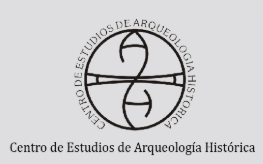The Alsina’s zanja and associated forts in the central and southern sectors of the pampean dry wet ecotonal area
DOI:
https://doi.org/10.35305/tpahl.v10iIX.88Keywords:
border, forts, XIX Century, ecotone, ditchAbstract
In this work a spatial analysis of the Zanja proposed by the Minister of War Adolfo Alsina is developed, based on the comparison of satellite images, historical cartography and other documentary sources with the original project and the remains of the archaeological sites currently visible. The state plan sought to occupy 56000 km2 of the territory held by the indigenous people and achieve the reduction of the defensive line, the forts economy, the extension of the telegraph network and the demoralization of the indigenous by losing their main water. In the period 1876-1877 a 374 km ditch was built, forts were installed at regular distance and stable villages were founded (Carhué, Guaminí, Puan and Trenque Lauquen). This research evaluates the material traces generated by this project and their characteristics in the study area are evaluated, considering as operational units the trench and walling together with the associated forts.







